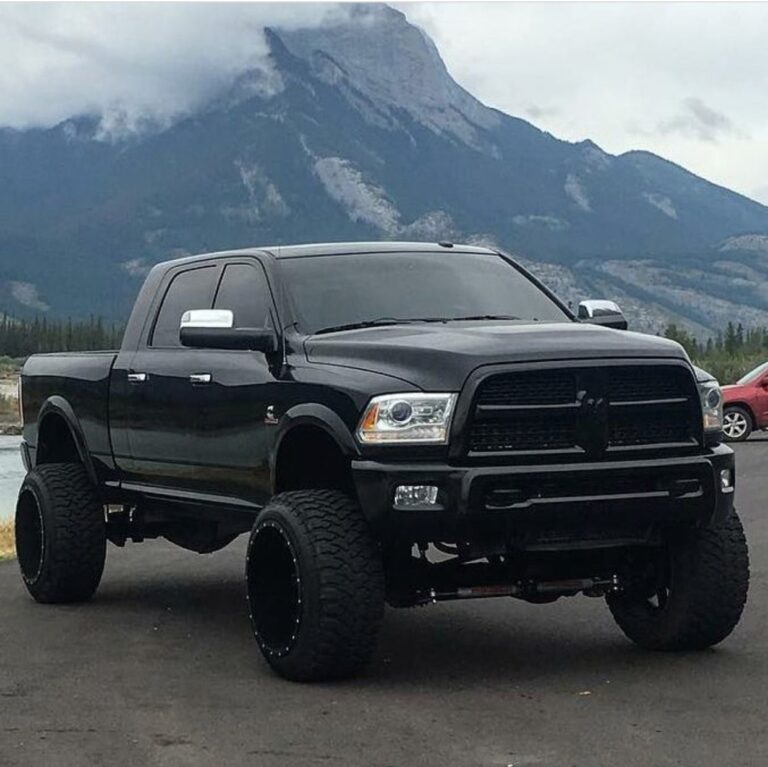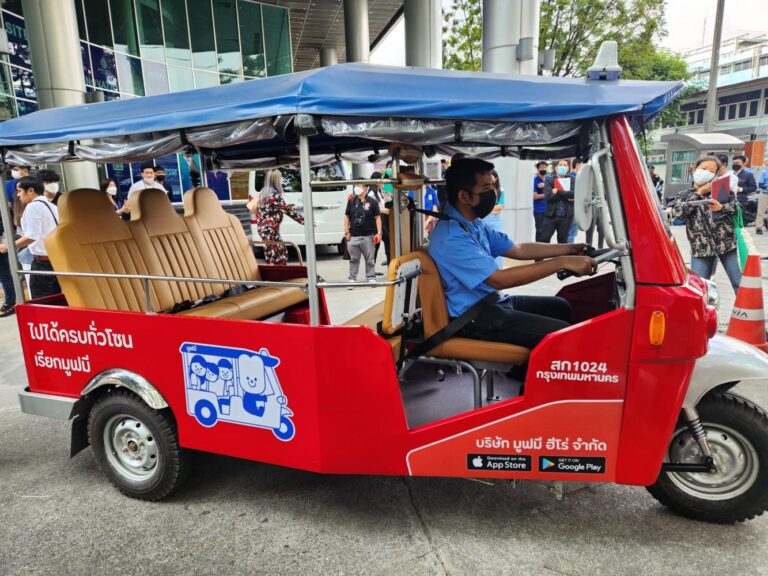Semi Truck Inside: Unveiling the Driver’s Mobile Command Center and Home
Semi Truck Inside: Unveiling the Driver’s Mobile Command Center and Home cars.truckstrend.com
Introduction: The World Within Four Walls
For the casual observer, a semi-truck is an imposing machine of steel and power, primarily seen from the outside, rumbling down highways. But for the professional driver, the "semi truck inside" is far more than just a cabin; it is their office, their home, and their sanctuary. It’s a meticulously designed space where countless hours are spent, critical decisions are made, and much-needed rest is found. The interior of a semi-truck is a testament to the blend of functionality, ergonomics, and comfort, evolving from rudimentary cockpits to sophisticated mobile living quarters. Understanding the intricacies of this internal world is crucial to appreciating the demanding life of a truck driver, the innovations driving the trucking industry, and the paramount importance of safety and well-being on the open road. This comprehensive guide will delve deep into every facet of the semi truck inside, exploring its components, benefits, practical considerations, and the constant evolution that shapes the modern trucking experience.
Semi Truck Inside: Unveiling the Driver’s Mobile Command Center and Home
The Command Center: The Driver’s Cockpit
At the heart of every semi-truck interior lies the driver’s cockpit – the nerve center from which the colossal machine is controlled. This is where precision meets power, and every element is strategically placed for optimal driver performance and safety.
Dashboard Layout and Controls: Modern semi-truck dashboards are a marvel of engineering, designed for intuitive control and clear information display. They feature an array of gauges (speedometer, tachometer, oil pressure, air pressure, fuel level, coolant temperature), warning lights, and digital displays. Ergonomically positioned switches control everything from lights and wipers to trailer brakes and auxiliary functions. The steering wheel, often adjustable for tilt and telescoping, houses controls for cruise control, infotainment, and sometimes even hands-free communication.
Pedals and Shifter: The traditional manual transmission, though still present in some older models, is increasingly being replaced by automated manual transmissions (AMTs) or fully automatic transmissions. This simplifies the driving experience, reducing driver fatigue, especially in congested traffic. The accelerator, brake, and clutch (if manual) pedals are robust and designed for precise control, often with non-slip surfaces.
Infotainment and Connectivity: Gone are the days of simple AM/FM radios. Today’s cockpits boast advanced infotainment systems with large touchscreens offering navigation, Bluetooth connectivity, satellite radio, USB ports, and even Wi-Fi hotspots. These systems are integrated with vehicle diagnostics, allowing drivers to monitor performance and receive alerts.
Safety Technology Integration: The cockpit is also the hub for an ever-growing suite of safety technologies. Electronic Logging Devices (ELDs) are mandatory for recording driving hours to ensure compliance with Hours of Service (HOS) regulations. GPS navigation systems are purpose-built for commercial vehicles, factoring in truck-specific restrictions like bridge heights, weight limits, and hazardous material routes. Dash cameras provide crucial evidence in case of incidents, while advanced driver-assistance systems (ADAS) like collision mitigation, lane departure warning, and blind-spot monitoring systems often provide visual and auditory alerts directly within the driver’s line of sight or through the dashboard display.
The cockpit’s design emphasizes visibility, with large windshields and side mirrors, often heated and power-adjustable, providing a commanding view of the road and surrounding traffic. Every button, switch, and screen is a tool designed to empower the driver, ensuring they have complete command over their vehicle and the information needed to navigate safely and efficiently.
Beyond the Wheel: The Sleeper Cabin

For long-haul truck drivers, the sleeper cabin transforms the semi-truck from a mere vehicle into a mobile home. This dedicated living space is crucial for rest, relaxation, and maintaining well-being during extended periods away from home.
Evolution of Sleeper Design: Early sleepers were often cramped, uninsulated boxes. Modern sleepers, however, have evolved into remarkably spacious and amenity-rich environments. They range from basic "day cab" configurations (no sleeper) for local routes, to integrated mid-roof sleepers, and the luxurious, high-rise condominiums on wheels.
Key Amenities:
- Beds: Most sleepers feature a comfortable bunk bed, often with a high-quality mattress. Many offer double bunks for team drivers or extra storage. Some high-end models even include convertible dinettes that transform into beds.
- Storage: Ample storage is vital. Overhead cabinets, under-bunk drawers, and dedicated wardrobe closets help drivers keep their belongings organized and secure.
- Climate Control: Independent HVAC systems ensure the sleeper remains comfortable regardless of the outside temperature, often with auxiliary power units (APUs) to provide heating and air conditioning without idling the main engine, saving fuel and reducing emissions.
- Kitchenette Features: Many sleepers come equipped with a mini-fridge, microwave oven, and sometimes even a small counter space or sink. This allows drivers to prepare their own meals, promoting healthier eating habits and saving money on restaurant food.
- Entertainment: Flat-screen TVs, DVD/Blu-ray players, and satellite TV hookups are common, providing entertainment and a sense of normalcy after a long day of driving. Power outlets and USB charging ports are ubiquitous for personal electronics.
- Privacy and Comfort: Curtains or blinds on all windows ensure privacy and block out light for restful sleep. Good insulation reduces road noise, creating a quieter, more peaceful environment.

![]()
The sleeper cabin is not just a place to sleep; it’s a driver’s personal retreat. Its design directly impacts a driver’s quality of life, ability to rest, and ultimately, their safety and productivity on the job. The more comfortable and functional the sleeper, the better equipped the driver is to handle the demands of the road.
Maximizing Space and Comfort: Organization and Customization
Given the confined nature of a semi-truck interior, efficient organization and thoughtful customization are paramount to making the space truly livable and functional.
Ingenious Storage Solutions: Professional drivers become masters of organization. Beyond the built-in cabinets and drawers, many utilize additional solutions:
- Overhead Consoles: Often used for paperwork, maps, and small electronics.
- Under-Bunk Storage: Ideal for larger items, luggage, or supplies.
- Hanging Organizers: Pouches and nets attached to walls or seats for quick access to essentials like toiletries, snacks, or charging cables.
- Storage Bins and Containers: Categorizing items in clear or labeled bins helps maintain order and makes finding things easier.
- Collapsible Items: Using collapsible laundry hampers, water bottles, and food containers saves space when not in use.
Personalization and Home Comforts: Drivers often personalize their space to make it feel more like home, reducing the monotony and isolation of life on the road.
- Decor: Photos, small plants, personal mementos, and even LED strip lighting can add a touch of personality and warmth.
- Bedding: High-quality sheets, blankets, and pillows contribute significantly to sleep quality.
- Small Appliances: Beyond standard built-ins, drivers might add a coffee maker, a portable cooler, an air fryer, or a small fan for added convenience.
- Ergonomic Aids: Lumbar support pillows, seat cushions, and steering wheel covers can enhance comfort during long hours.
Tips for Optimal Interior Living:
- Regular Decluttering: A cluttered space can feel suffocating. Regular purges of unnecessary items are essential.
- Designated Zones: Mentally or physically divide the space into zones: driving, sleeping, eating, and storage.
- Essential Items List: Maintain a checklist of must-have items for safety, hygiene, cooking, and personal comfort.
- Battery-Powered Alternatives: For non-essential items, consider battery-powered versions to reduce reliance on the truck’s electrical system.
- Good Lighting: Supplement factory lighting with portable LED lights for tasks or ambiance.
A well-organized and personalized semi-truck interior not only enhances comfort but also improves efficiency, reduces stress, and contributes to the driver’s overall well-being, transforming a workspace into a truly functional mobile home.
Technology and Connectivity on the Road
The modern semi-truck interior is a hub of advanced technology, designed to enhance safety, efficiency, and communication for drivers constantly on the move.
Electronic Logging Devices (ELDs): Mandated in many regions, ELDs automatically record driving time, engine hours, vehicle movement, and location data. They ensure compliance with Hours of Service (HOS) regulations, promoting driver rest and preventing fatigue-related accidents. Drivers interact with ELDs via dedicated tablets or integrated dashboard screens, logging their duty status and submitting reports.
Advanced GPS/Navigation Systems: Unlike consumer GPS devices, truck-specific navigation systems are crucial. They account for truck dimensions (height, weight, length), hazardous material restrictions, bridge clearances, weight limits, and legal routes, preventing drivers from encountering dangerous or illegal passages. Many systems also provide real-time traffic updates and estimated arrival times.
Communication Systems:
- CB Radio: Still a staple for many drivers, CB (Citizens Band) radio allows for real-time communication with other truckers, providing updates on traffic, road conditions, and emergencies.
- Satellite Communication: For remote areas without cellular coverage, satellite communication systems offer reliable voice and data connectivity for dispatch and emergencies.
- Cellular Hotspots/Wi-Fi: Integrated or portable Wi-Fi hotspots provide internet access for personal use, entertainment, and accessing company portals or online resources.
- Hands-Free Devices: Bluetooth connectivity for smartphones is standard, allowing drivers to make calls safely without taking their hands off the wheel.
Safety and Monitoring Systems:
- Collision Avoidance Systems: Using radar and cameras, these systems warn drivers of potential frontal collisions and can even initiate braking.
- Lane Departure Warning: Alerts drivers if they drift out of their lane without signaling.
- Blind Spot Monitoring: Uses sensors to detect vehicles in blind spots, particularly critical for large trucks.
- Dash Cams: Front-facing and sometimes interior-facing cameras record video, providing an invaluable record in case of accidents or disputes. Some are integrated with telematics systems for fleet monitoring.
- Driver Fatigue Monitoring: Advanced systems use cameras to monitor driver alertness, detecting signs of drowsiness or distraction and issuing alerts.
The integration of these technologies within the semi-truck interior empowers drivers with critical information, enhances their ability to perform their job safely and efficiently, and keeps them connected to their dispatch, family, and the outside world, transforming the traditional driving experience into a sophisticated, data-driven operation.
Maintaining Your Mobile Home: Hygiene and Upkeep
The semi-truck interior, being both a workplace and a living space, requires diligent maintenance and hygiene practices to ensure a healthy, comfortable, and functional environment for the driver.
Routine Cleaning:
- Daily Tidiness: Simple daily tasks like wiping down surfaces, emptying trash, and making the bed can prevent clutter and keep the space fresh.
- Vacuuming: A small, powerful portable vacuum cleaner is essential for removing dirt, dust, and crumbs from floors, seats, and upholstery. Truck stop facilities often have industrial vacuums, but a personal one offers convenience.
- Surface Wiping: Using multi-surface cleaners and disinfectant wipes on the dashboard, steering wheel, door panels, and common touchpoints helps maintain cleanliness and prevent the spread of germs.
- Window Cleaning: Keeping the windshield and side windows spotless is not just about aesthetics; it’s crucial for clear visibility and safety.
- Odor Control: Air fresheners, odor eliminators, and ensuring good ventilation can combat stale air and unpleasant smells, especially important where food is prepared and consumed.
Waste Management:
- Designated Bins: Having clearly designated bins for general waste and recyclables simplifies waste disposal.
- Regular Disposal: Drivers must be diligent about emptying trash at truck stops or designated waste areas to prevent odors and insect issues.
Air Quality and Ventilation:
- Cabin Air Filters: Regular replacement of cabin air filters is vital to ensure clean air circulation and prevent dust and allergens from accumulating inside.
- Circulation: Utilizing the truck’s ventilation system, opening windows when safe, and occasionally airing out the cabin helps maintain fresh air.
- Humidity Control: In humid climates, managing moisture can prevent mold and mildew growth.
Deep Cleaning and Organization:
- Scheduled Deep Cleans: Beyond daily tidiness, a thorough deep clean should be scheduled periodically, involving cleaning upholstery, shampooing carpets, and organizing all storage areas.
- Inventory Management: Regularly checking and organizing supplies (food, water, toiletries, cleaning products) helps prevent overstocking or running out of essentials.
Challenges and Solutions:
- Limited Access to Facilities: Drivers often rely on truck stop amenities for showers and laundry. Planning routes that include stops with good facilities is key.
- Space Constraints: Creative storage solutions and a minimalist approach help manage items within confined spaces.
- Power Limitations: Battery-powered cleaning tools or those that plug into a 12V outlet are practical.
Maintaining a clean and organized semi-truck interior is not just about aesthetics; it directly impacts the driver’s health, comfort, and mental well-being, contributing to a safer and more productive life on the road.
Ergonomics and Driver Well-being
The design of the semi-truck interior plays a critical role in the physical and mental well-being of the driver. Ergonomics, the science of designing the workplace to fit the worker, is paramount in an environment where individuals spend countless hours.
Adjustable Seating: The driver’s seat is perhaps the most crucial ergonomic component. Modern truck seats are highly adjustable, offering:
- Air Suspension: Absorbs road vibrations, significantly reducing fatigue and back strain.
- Lumbar Support: Adjustable to provide proper support for the lower back, preventing discomfort and injury.
- Fore/Aft, Height, and Tilt Adjustments: Allows drivers of all sizes to find an optimal driving position.
- Armrests: Provide support for arms and shoulders, reducing strain.
- Heating and Cooling: Luxury features that enhance comfort in extreme temperatures.
Steering Wheel and Pedal Placement:
- Adjustable Steering Column: Tilt and telescoping features allow the driver to position the steering wheel at a comfortable height and distance, promoting good posture.
- Optimized Pedal Spacing: Pedals are spaced to allow natural foot movement and reduce strain on ankles and knees.
Visibility and Control Placement:
- Clear Sightlines: The dashboard layout and window design are engineered to provide maximum visibility of the road, mirrors, and instruments without excessive head or eye movement.
- Intuitive Control Layout: Frequently used controls (lights, wipers, cruise control, mirror adjustments) are placed within easy reach, minimizing the need to stretch or take eyes off the road.
Impact on Driver Health: Poor ergonomics can lead to a range of health issues common among truck drivers, including:
- Musculoskeletal Disorders: Back pain, neck pain, shoulder pain, and carpal tunnel syndrome from prolonged sitting and repetitive motions.
- Fatigue: Discomfort contributes to fatigue, which is a major safety hazard.
- Circulatory Issues: Prolonged sitting can affect circulation, making regular breaks and movement vital.
Practical Advice for Drivers:
- Proper Seat Adjustment: Take the time to adjust your seat correctly at the start of each shift. Your feet should comfortably reach the pedals, and your back should be fully supported.
- Regular Breaks: Stop every few hours to stretch, walk around, and change position.
- Hydration and Nutrition: Staying hydrated and eating healthy meals helps maintain energy levels and overall well-being.
- Exercise: Incorporate simple exercises or stretches into your routine during breaks to counteract the effects of prolonged sitting.
- Listen to Your Body: Don’t ignore discomfort. Adjust your position, take a break, or seek medical advice if pain persists.
Investing in ergonomic design within the semi-truck interior is an investment in driver health, safety, and long-term career sustainability.
Safety Features Inside the Cab
While external safety features like brakes and lights are obvious, the interior of a semi-truck is equipped with numerous features designed to protect the driver and enhance overall road safety.
Passive Safety Features:
- Seatbelts: Multi-point seatbelt systems are mandatory, designed to keep the driver securely restrained in the event of a sudden stop or collision.
- Airbags: Though less common than in passenger cars, some modern semi-trucks are equipped with driver-side airbags to provide additional protection in frontal impacts.
- Crumple Zones/Reinforced Cab Structure: While the entire truck doesn’t have crumple zones like cars, the cab structure is designed to be robust and provide a safety cage around the driver, redirecting impact forces away from the occupant.
- Emergency Exits: Beyond the main doors, many sleepers include escape hatches or secondary exits for use in emergencies like rollovers or fires.
Active Safety Features (Driver Assistance Systems):
- Electronic Stability Control (ESC): Helps prevent rollovers and skidding by automatically reducing engine power and applying brakes to individual wheels.
- Traction Control Systems (TCS): Prevents wheel spin during acceleration on slippery surfaces.
- Roll Stability Control (RSC): A specific type of ESC designed for trucks to prevent rollovers by monitoring vehicle stability.
- Adaptive Cruise Control (ACC): Automatically adjusts the truck’s speed to maintain a safe following distance from the vehicle ahead.
- Automatic Emergency Braking (AEB): Detects an imminent collision and can automatically apply the brakes if the driver doesn’t react in time.
- Lane Keeping Assist (LKA): Provides gentle steering input to help keep the truck centered in its lane.
- 360-Degree Camera Systems: Offer a bird’s-eye view around the truck, invaluable for maneuvering in tight spaces and reducing blind spots.
- Tire Pressure Monitoring Systems (TPMS): Alerts the driver to under-inflated tires, which can be a significant safety hazard and lead to blowouts.
Emergency Preparedness:
- Fire Extinguisher: A readily accessible fire extinguisher is a mandatory safety item for combating small fires.
- First-Aid Kit: A well-stocked first-aid kit is essential for addressing minor injuries or providing immediate care in more serious situations.
- Emergency Triangles/Flares: Stored within the cab, these are used to warn approaching traffic in case of a breakdown or accident.
- Communication Devices: Reliable communication tools (CB radio, cell phone, satellite phone) are critical for calling for help in emergencies.
The ongoing integration of these safety features within the semi-truck interior underscores the industry’s commitment to protecting its most valuable asset – the driver – and ensuring that every journey is as safe as possible.
Estimated Costs and Value of Semi Truck Interior Features
It’s important to clarify that "Semi Truck Inside" isn’t a single product with a price tag. Instead, the cost is integrated into the overall price of the truck, with significant variations based on the level of interior features, comfort, and technology chosen. The following table provides estimated cost impacts and value propositions for various interior elements, from basic necessities to luxury upgrades. These figures are approximate and can fluctuate widely based on truck manufacturer, model, year, and market conditions.
| Feature Category | Specific Interior Feature | Estimated Cost Impact (New Truck Price) | Value Proposition for Driver/Owner |
|---|---|---|---|
| Driver’s Cockpit Essentials | Standard Ergonomic Driver’s Seat | Included in Base Price | Essential for comfort, reduces fatigue, improves posture. |
| Advanced Air-Ride Seat (Heated/Cooled, Lumbar Support) | +$1,000 – $3,000 | Superior comfort, reduces long-term health issues, increases driver retention. | |
| Standard Dashboard & Gauges | Included in Base Price | Fundamental for monitoring truck performance and road conditions. | |
| Integrated Touchscreen Infotainment (GPS, Bluetooth) | +$1,500 – $5,000 | Navigation, communication, entertainment; enhances efficiency and driver morale. | |
| ELD (Electronic Logging Device) | Typically provided by fleet/software | Mandated compliance, accurate HOS tracking, improves safety. | |
| Sleeper Cabin Amenities | Basic Sleeper (Bed, Minimal Storage) | +$5,000 – $15,000 (over day cab) | Essential for long-haul rest; basic overnight accommodation. |
| Mid-Roof Sleeper (More Headroom, Storage) | +$15,000 – $30,000 | Increased comfort, better storage options; balances space and aerodynamics. | |
| High-Rise/Condo Sleeper (Max Space, Walk-in, Desk) | +$30,000 – $60,000+ | Premium comfort, ample living space; enhances driver quality of life, aids retention. | |
| Built-in Refrigerator/Freezer | +$500 – $1,500 | Allows healthy food storage, saves money on meals, reduces stops. | |
| Microwave Oven | +$300 – $800 | Enables meal preparation, saves money, provides convenience. | |
| Integrated HVAC (APU – Auxiliary Power Unit) | +$8,000 – $15,000 | Climate control without idling engine; saves fuel, reduces emissions, ensures comfortable rest. | |
| Flat-Screen TV Mount & Wiring | +$200 – $500 (TV extra) | Entertainment and relaxation; improves driver morale and reduces boredom. | |
| Technology & Safety Upgrades | Advanced Driver-Assistance Systems (ADAS Suite) | +$3,000 – $10,000+ | Collision mitigation, lane departure warning; significantly enhances safety, reduces accident risk. |
| 360-Degree Camera System | +$1,000 – $3,000 | Eliminates blind spots, aids maneuvering, improves safety in tight spaces. | |
| In-Cab Wi-Fi Hotspot (Hardware) | +$300 – $800 | Reliable internet access for work and personal use; crucial for connectivity. | |
| Customization & Comfort | Premium Interior Trim (Leather Seats, Wood Accents) | +$2,000 – $7,000 | Enhanced aesthetics and durability, contributes to higher resale value and driver pride. |
| Enhanced Sound Insulation | +$500 – $1,500 | Quieter cab, reduces driver fatigue, improves concentration. | |
| Custom Storage Solutions (Aftermarket) | $100 – $1,000+ (DIY to professional) | Maximizes space, improves organization, tailored to driver needs. | |
| Maintenance & Accessories | Regular Cleaning Supplies | $50 – $100/month | Essential for hygiene, prevents wear and tear, preserves interior value. |
| Portable Vacuum Cleaner | $50 – $200 | Convenient for daily tidiness, maintains cleanliness. | |
| First Aid Kit / Fire Extinguisher | $30 – $100 | Crucial safety items, potentially life-saving. |
This table illustrates that while basic interior features are standard, investing in higher-end amenities and advanced technology can significantly increase the truck’s purchase price. However, these investments often yield substantial returns in terms of driver retention, improved safety, fuel efficiency (e.g., APUs), and overall operational effectiveness. For owner-operators, these features represent a direct investment in their mobile business and personal well-being.
Frequently Asked Questions (FAQ) About Semi Truck Inside
1. What is the main difference between a "day cab" and a "sleeper cab"?
A day cab is designed for short-haul routes where the driver returns home daily. It has a small cabin with seats for the driver and sometimes a passenger, but no dedicated sleeping area. A sleeper cab is built for long-haul operations, incorporating a living space behind the driver’s seat with a bed, storage, and often amenities like a refrigerator, microwave, and TV, allowing drivers to live on the road for extended periods.
2. What are the essential items every truck driver should have inside their cab?
Beyond personal items, essentials include: an ELD, a truck-specific GPS, a CB radio, a first-aid kit, a fire extinguisher, emergency triangles, cleaning supplies (wipes, portable vacuum), non-perishable food and water, basic tools, extra clothes, and personal hygiene products. Many also carry a portable cooler, microwave, and bedding.
3. How often should I clean the interior of my semi-truck?
Daily tidiness (wiping surfaces, emptying trash) is recommended. A thorough vacuuming and surface wipe-down should be done at least weekly. A deep clean, including upholstery cleaning and organizing all storage, is advisable monthly or quarterly, depending on usage and personal preference.
4. Can I customize my truck’s interior, and what are common modifications?
Yes, customization is very common. Drivers personalize their space with decorative items (photos, LED lights), upgraded bedding, additional small appliances (coffee maker, air fryer), improved sound systems, and aftermarket storage solutions (custom shelving, drawers). Some even install specialized flooring or window treatments.
5. What are ELDs, and why are they important for truck drivers?
ELDs (Electronic Logging Devices) are electronic hardware connected to a truck’s engine that automatically record driving time, engine hours, vehicle movement, and location. They are mandatory in many countries (like the US and Canada) to ensure drivers comply with Hours of Service (HOS) regulations, which limit driving time to prevent fatigue and improve road safety.
6. How do truck drivers stay connected to the internet and family on the road?
Modern trucks often come with integrated Wi-Fi hotspots, or drivers use portable cellular hotspots. Many rely on their smartphones for calls, texts, and social media. Truck stops often offer Wi-Fi, and some drivers use satellite communication systems for remote areas.
7. Are there specific ergonomic considerations for truck drivers?
Absolutely. Truck drivers spend long hours seated, so ergonomic features are crucial. Key considerations include: highly adjustable air-ride seats (with lumbar support, heating/cooling), adjustable steering wheels, intuitively placed controls, and good visibility. Drivers are advised to take regular breaks, stretch, and maintain good posture to mitigate the risks of musculoskeletal issues and fatigue.
8. What safety features are commonly found inside a modern semi-truck?
Beyond basic seatbelts and sometimes airbags, modern interiors integrate advanced safety features like collision mitigation systems (forward collision warning, automatic emergency braking), lane departure warning/assist, blind-spot monitoring, electronic stability control, and driver fatigue monitoring systems. Dash cameras are also common for recording incidents.
Conclusion: The Evolving Interior of the Open Road
The semi-truck interior is a dynamic space, constantly evolving to meet the complex demands of the trucking industry and the needs of its most valuable asset: the driver. From the highly functional cockpit, bristling with advanced technology for safety and efficiency, to the increasingly luxurious and customizable sleeper cabin that serves as a mobile home, every aspect of the "semi truck inside" is meticulously designed.
It is a testament to the ingenuity that transforms a powerful machine into a livable environment, ensuring that drivers can perform their arduous tasks with maximum comfort, safety, and productivity. As technology continues to advance and the importance of driver well-being gains greater recognition, we can expect even more sophisticated, intuitive, and comfortable interiors in the trucks of tomorrow. Understanding this vital space not only sheds light on the daily lives of professional drivers but also highlights the continuous innovation driving the backbone of our global economy. The semi-truck inside is, truly, where the journey begins and ends, day after day, mile after mile.





